Benchtop XRF Analyzer
SuperbMelt 74 elements from potassium (K) to uranium (U) (excluding light elements) Benchtop XRF Analyzer
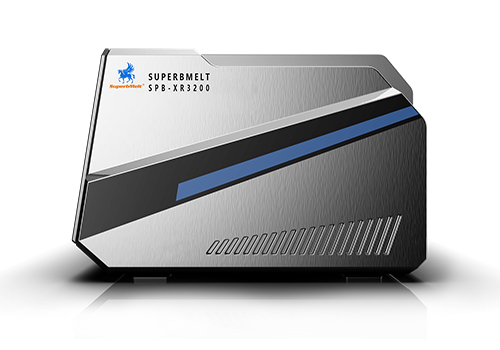
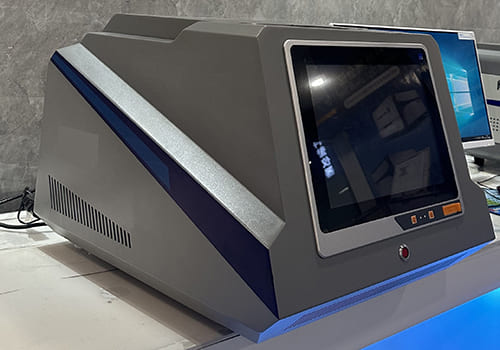
SuperbMelt Benchtop XRF Analyzer can detect 74 elements, from Potassium (K) to Uranium (U), in various forms such as solid, powder, or liquid (excluding light elements). With just one test, it can analyze valuable metals including gold, silver, platinum, rhodium, and palladium.
This analyzer offers fast testing times (5- 60S) and provides highly accurate results, with a precision range of 0.01% to 99.99% and a margin of error within 0.05%. It is also capable of identifying impurities like gold mixed with rhenium and gold mixed with tungsten.
Designed for stability and precision, it can distinguish between 99.99% gold and 99.90% gold. The software offers a user-friendly interface, displaying percentages and gold purity in karats. It also allows for customized reports to meet client needs. This makes it ideal for various applications, including jewelry customization, gold buy-back programs, retail jewelry quality checks, pawn shop assessments, jewelry education programs, and academic training.
| Model | SPB-XR3200 |
| Analysis Range | 0.01% ~ 99.99% |
| Measurement Accuracy | 0.05% |
| Sample Form | Solid, powder, liquid |
| Tube Voltage | OuA~1000uA |
| High Voltage Power Supply | 0 ~ 50KV |
| Camera | HD camera |
| Filters | Selectable customized switches |
| Detector Type | Proportional Counter |
| Analyzer | Multi channel simulation |
| Sample Chamber Size | 270*260*100(mm) |
| Test Time | 5sec ~ 60sec |
| Detection Elements Range | 74 elements between potassium (K) and uranium (U) (excluding light elements) |
| Standard Accessory | Jewelry holder*1, power cable*1, calibration samples*1 |
| Analysis Software | Qualitative and quantitative analysis software |
| External Dimensions | 520*450*400(mm) |
| Weight | 38 Kg |
Jewelry Manufacturing and Customization:
- Verifies the purity of gold, silver, platinum, and other precious metals to meet industry standards.
- Helps in designing customized jewelry with accurate metal compositions, essential for high-end and bespoke products.
Gold Recycling and Buy-Back Programs:
- Enables quick evaluation of gold items to determine their value during buy-back or recycling processes.
- Detects gold-tungsten and gold-rhenium impurities, which are often used to manipulate the weight of gold products.
Pawn Shops and Quality Assurance:
- Ensures authenticity during pawn and resale operations, minimizing the risk of fraudulent items.
- Provides rapid verification with non-destructive testing, which helps in customer confidence and faster transactions.
Jewelry Retail and Appraisal Services:
- Assists in retail operations by providing precise information about the K-value and purity of precious metals.
- Generates personalized reports that retailers can share with customers, enhancing transparency.
Educational and Training Institutions:
- Used in jewelry-related academic programs for practical training on material verification and analysis.
- Supports research initiatives in universities or laboratories dealing with precious metal testing.
Aerospace and Electronics:
- Helps ensure the use of high-purity gold, silver, and platinum in critical components such as connectors and circuits, where precision is essential.
Luxury Watchmaking and High-Value Goods:
- Verifies metal purity in luxury items, such as gold-plated or platinum-coated watches, ensuring the integrity of high-end products.
Key Features:
Wide Element Detection Range:
- Measures up to 74 elementsbetween Potassium (K) and Uranium (U).
- Analyzes multiple forms: solid, powder, and liquid(excluding light elements).
High Precision & Accuracy:
- Provides 01% to 99.99%accuracy with only 0.05% error margin.
- Capable of identifying gold-tungstenand gold-rhenium alloys to prevent fraud.
Fast Testing Time:
- Delivers results in just 5-60 secondsper analysis, ensuring efficiency.
Customizable Reporting:
- Generates reports with percentage compositions and gold K values.
- Allows personalized test reportsfor customer needs.
Advantages:
Precise Gold Purity Differentiation:
- Can distinguish between 99% goldand 99.90% gold, which is crucial in gold trading and jewelry.
User-Friendly Interface:
- Software is designed with ease of use, displaying all key measurements clearly.
Versatile Applications:
- Used in various sectors such as jewelry customization, gold buy-back, jewelry retail, pawn shops, and academic training.
Environmentally Friendly & Non-Destructive:
- Conducts tests without damaging the sample, preserving its original condition.
Why SuperbMelt Benchtop XRF Analyzer



Any Question About SuperbMelt Benchtop XRF Analyzer
Any Question About SuperbMelt Precious Metal Spectrometer
SuperbMelt Benchtop XRF Analyzer Guide
The Importance of Metal Analyzers
- Ensuring Material Quality and Purity
Jewelry and Precious Metals: Metal analyzers confirm the purity of gold, silver, platinum, and other precious metals, preventing fraud and ensuring customer trust.
Manufacturing: They guarantee the correct materials are used in production, avoiding defects that could compromise product safety and durability.
- Non-Destructive Testing (NDT)
XRF analyzers are non-destructive, meaning they analyze the material’s composition without causing any damage. This is essential for industries like electronics, jewelry, and aerospace, where precision is crucial.
- Compliance with Regulations
Many industries must meet international material standards and environmental regulations, such as ROHS (Restriction of Hazardous Substances) and REACH. Metal analyzers help companies ensure compliance, reducing the risk of fines and product recalls.
- Process Efficiency and Speed
Metal analyzers provide quick results (in seconds or minutes), which helps manufacturers streamline their processes and maintain production speed without delays caused by traditional lab testing.
- Cost Savings and Waste Reduction
In recycling and scrap metal industries, metal analyzers enable the efficient sorting of metals, ensuring that valuable materials are recovered and waste is minimized.
- Customization for Various Applications
Modern analyzers can be adapted to specific needs, such as measuring trace elements or detecting metal contamination in food production and medical equipment manufacturing.
Metal analyzers, particularly portable and benchtop XRF analyzers, have become indispensable for maintaining quality, safety, and efficiency across various industries. They contribute not only to product reliability but also to sustainability efforts by promoting recycling and reducing waste.
Types of Metal Analyzers
1. XRF (X-Ray Fluorescence) Analyzers
- How It Works:Uses X-rays to excite atoms in the material, measuring the energy released to determine elemental composition.
- Applications:Jewelry testing, precious metal authentication, environmental monitoring, recycling, and compliance checks (like ROHS).
- Advantages:Non-destructive, fast results, portable models available.
2. OES (Optical Emission Spectrometry) Analyzers
- How It Works:A spark or arc excites the atoms in a sample, and the emitted light is analyzed to identify elements.
- Applications:Widely used in metal production industries, including steel manufacturing and foundries.
- Advantages:Precise for detecting a wide range of elements, including carbon, sulfur, and phosphorous.
3. LIBS (Laser-Induced Breakdown Spectroscopy) Analyzers
- How It Works:A laser pulse creates a plasma on the sample surface, and the light emitted by the plasma is analyzed to determine elemental composition.
- Applications:Suitable for recycling, quality control, and alloy identification.
- Advantages:Highly portable and fast, capable of analyzing light elements (e.g., lithium, beryllium).
4. ICP (Inductively Coupled Plasma) Spectrometers
- How It Works:The sample is ionized in a plasma state, and the ions are analyzed through mass spectrometry (ICP-MS) or optical emission spectrometry (ICP-OES).
- Applications:Trace element analysis in environmental monitoring, pharmaceuticals, and food safety.
- Advantages:Extremely sensitive and precise, suitable for detecting very low concentrations.
5. AAS (Atomic Absorption Spectroscopy) Analyzers
- How It Works:Measures the absorption of light by free atoms in the gaseous state to determine elemental concentration.
- Applications:Primarily used in laboratories for chemical analysis, including mining and environmental testing.
- Advantages:High sensitivity and accuracy for specific elements.
6. Niton Handheld Analyzers (Portable Analyzers)
- How It Works:Often uses XRF or LIBS technology in a handheld device for in-field testing.
- Applications:Scrap metal sorting, jewelry retail, and construction material inspection.
- Advantages:Portable and easy to use, providing immediate results.
What Analyzers Are Commonly Used in the Jewelry Industry?
1. XRF (X-Ray Fluorescence) Analyzers
- Purpose:Non-destructive testing of gold, silver, platinum, and other alloys.
- Why It’s Used:XRF analyzers offer fast and accurate measurements, which are crucial in jewelry retail, pawnshops, and gold recycling.
- Example Device:
- SuperbMelt XRF Analyzer– Measures up to 74 elements and can identify “gold-tungsten” and “gold-rhenium” counterfeit alloys.
2. Fire Assay (Cupellation Method)
- Purpose:Traditional and highly accurate method for determining gold purity.
- Why It’s Used:Though time-consuming, it’s often used by jewelry manufacturers for precise analysis during production.
- Limitation:It’s destructive, as it requires melting the sample.
3. ICP-OES (Inductively Coupled Plasma Optical Emission Spectrometry)
- Purpose:For trace element analysis, ensuring the purity of precious metals.
- Why It’s Used:Provides more detailed data compared to XRF, especially for light elements.
- Application:Common in jewelry manufacturing and metal refining.
4. Electronic Gold Testers
- Purpose:Quickly tests the karat value of gold.
- Why It’s Used:Ideal for retail and pawnshops to verify gold karats (e.g., 18K, 24K).
- Example Device:Karat meters that use electrical resistance to determine purity.
5. Magnetometers and Density Testers
- Purpose:Detect counterfeit jewelry containing non-precious metal cores (like tungsten).
- Why It’s Used:Fast pre-screening method to check for fake gold or silver items.
FAQ About the SuperbMelt Benchtop XRF Analyzer
1. What is benchtop XRF?
Key Features:
- Elemental Range: Typically detects elements from potassium (K) to uranium (U), though some models also analyze lighter elements.
- Non-Destructive: No damage is caused to the sample, making it ideal for testing jewelry, precious metals, and coatings.
- Rapid Analysis: Results are generated within seconds to minutes (usually between 5–60 seconds).
- High Accuracy: Many benchtop XRF machines achieve precision levels with a minimal margin of error (~0.05%).
Applications:
- Jewelry and Precious Metals: Analyzes gold, silver, platinum, rhodium, and more, distinguishing between purities like 99.99% and 99.90% gold.
- Recycling and Metal Recovery: Determines metal composition for recycling industries.
- Electronics: Checks for hazardous substances or verifies metal content.
- Education and Research: Useful in laboratories and universities for materials science studies.
Benchtop XRF machines offer a balance between performance and convenience, making them a popular choice for industries that need portable yet powerful analytical tools.
2. Which is better XRD or XRF?
When choosing between X-ray diffraction (XRD) and X-ray fluorescence (XRF), it’s important to understand that they serve different purposes, and the “better” technique depends on your specific analytical needs.
XRF (X-ray Fluorescence) Overview:
- Purpose: Identifies and quantifies elements in a sample (elemental analysis).
- Strengths:
- Non-destructive analysis.
- Fast, providing results in seconds or minutes.
- Effective for determining the elemental composition (metals, ceramics, minerals).
- Portable versions available for on-site analysis.
- Limitations:
- Cannot provide detailed structural or crystalline information.
- Struggles with light element analysis (though some advanced systems can improve this).
Best for: Industries like mining, metallurgy, jewelry, and recycling, where knowing the elemental content is essential.
XRD (X-ray Diffraction) Overview:
- Purpose: Analyzes the crystal structure of materials, identifying phases and crystalline compounds.
- Strengths:
- Provides detailed insight into the arrangement of atoms and crystal phases.
- Identifies polymorphs (different structural forms of the same compound).
- Can determine grain size, strain, and crystal defects.
- Limitations:
- More time-consuming than XRF.
- Requires complex sample preparation.
- Not suitable for purely elemental analysis.
Best for: Applications in research, pharmaceuticals, materials science, and geology, where understanding crystalline structures or phase identification is essential.
When to Use Which?
- XRF is the better option if you need elemental analysis (e.g., determining the concentration of gold in jewelry or iron in ore).
- XRD is ideal for analyzing the phase composition of materials, such as distinguishing between different polymorphs or studying crystal structures in research.
In some cases, both techniques are complementary. For example, in mineralogy, XRF provides elemental data, while XRD identifies the mineral phases present. Choosing the right tool depends on whether your primary interest lies in what elements are present (XRF) or how they are arranged (XRD).
3. What XRF Cannot detect?
1. Light Elements (Z < 11)
- Elements below sodium (Z = 11), such as:
- Hydrogen (H)
- Helium (He)
- Lithium (Li)
- Beryllium (Be)
- Boron (B)
- Carbon (C) and Nitrogen (N) (in some setups)
Reason: XRF detects secondary X-rays emitted by excited atoms, but light elements emit low-energy X-rays, which are easily absorbed by air, the sample itself, or the detector’s window. Special configurations (e.g., under vacuum or with helium purge) improve sensitivity but cannot completely overcome the issue.
2. Elemental Isotopes and Molecular Structures
- Isotopic composition: XRF cannot distinguish between different isotopes of the same element (e.g., carbon-12 vs. carbon-13).
- Molecular or chemical forms: It can only provide elemental analysis, not molecular structure or oxidation states.
3. Trace Elements at Very Low Concentrations
- Detection limits: While XRF is effective at detecting elements in parts per million (ppm) concentrations, it may struggle to identify elements present in extremely low concentrations (parts per billion or lower). Other techniques like ICP-MS (Inductively Coupled Plasma Mass Spectrometry) may be more suitable for such precise measurements.
4. Gases
- Inability to analyze gases: XRF is mainly suitable for solid, liquid, or powder samples. Gases are too diffuse for effective X-ray interaction, although some specialized instruments can measure gaseous elements trapped in solid matrices.
5. Low Atomic Number Surface Contaminants
- Thin coatings or surface contaminants made of low-Z elements can be difficult to detect accurately, as they may not generate enough detectable signal or may be blocked by other layers.
6. Depth Limitations and Multi-layer Samples
- Depth sensitivity: XRF can only analyze the top layers of a sample. In thick or multi-layer samples, signals from the deeper layers may not be detected or accurately separated from the top layer’s signal.
Conclusion:
While XRF is versatile for many applications, including metals, minerals, and alloys, its limitations include poor detection of light elements, inability to identify molecular structures, challenges with trace elements, and unsuitability for gas analysis. Depending on the analysis goal, complementary techniques like ICP-MS, XRD, or FTIR may be used in combination with XRF to address these limitations.
4. What are the two types of XRF?
XRF (X-ray fluorescence) technology is divided into two main types based on its setup and application: Energy-Dispersive XRF (EDXRF) and Wavelength-Dispersive XRF (WDXRF). Both techniques detect and quantify elements but differ in how they process the X-ray signals.
1. Energy-Dispersive XRF (EDXRF)
- How it works:
EDXRF directly measures the energy levels of the emitted X-rays from the sample. A detector records the energy of the fluorescence X-rays and matches them to specific elements. - Key Features:
- Faster analysis since it captures the full spectrum simultaneously.
- Compact and often more affordable.
- Commonly used in benchtop analyzers and portable devices.
- Suitable for quick fieldwork or rapid screening of materials.
- Applications:
Widely used in environmental analysis, mining, alloy identification, and quality control in industries.
2. Wavelength-Dispersive XRF (WDXRF)
- How it works:
WDXRF separates emitted X-rays by wavelength using a diffraction grating or crystal before detection. This setup provides more detailed, accurate measurements. - Key Features:
- Higher resolution and precision than EDXRF.
- More complex equipment, typically requiring larger, stationary setups.
- Better at detecting elements with close energy levels and measuring trace elements.
- Applications:
Common in research labs and industries like cement production, metallurgy, and glass manufacturing, where precision is critical.
Comparison
| Feature | EDXRF | WDXRF |
|---|---|---|
| Speed | Faster | Slower |
| Precision | Moderate | High |
| Cost | Lower | Higher |
| Portability | Yes (portable/benchtop) | No (stationary setups) |
| Use Cases | Fieldwork, quick screening | Research, high-precision labs |
In summary, EDXRF is ideal for rapid, on-site analysis, while WDXRF is preferred for laboratory settings that demand precise measurements. The choice depends on the specific application, required precision, and budget.
5. What is the purpose of the XRF test?
The primary purpose of an XRF (X-ray Fluorescence) test is to analyze the elemental composition of a material quickly and non-destructively. It detects and quantifies the presence of metals and other elements, offering key insights for quality control, research, and compliance purposes across industries.
Key Purposes of XRF Testing:
Material Identification
- Verifies the type and purity of metals, alloys, and other substances, ensuring product consistency.
- Common in the jewelry, aerospace, and electronics industries to confirm material composition.
Quality Control & Assurance
- Ensures that raw materials meet specified chemical standards.
- Used in manufacturing, mining, and metallurgy to prevent defects.
Environmental and Regulatory Compliance
- Identifies hazardous substances like lead or cadmium to ensure compliance with regulations such as RoHS or REACH.
- Frequently applied in soil analysis, waste management, and consumer product safety.
Mining and Geology
- Determines the mineral content in ores and geological samples to assess resource quality and extraction feasibility.
Coating Thickness Measurement
- In industries like automotive and electroplating, XRF measures the thickness of metal coatings to maintain standards.
Precious Metal Verification
- Verifies gold purity and identifies counterfeit or adulterated metals, widely used in jewelry appraisal and recycling.
XRF testing provides fast, accurate, and non-invasive results, which makes it valuable in various applications, from laboratory research to field testing.
6. What is the principle of XRF analyzer?
The principle of an XRF (X-ray Fluorescence) analyzer revolves around the interaction between X-rays and matter. When a material is exposed to a high-energy X-ray beam, it emits secondary X-rays with unique energies that correspond to the elements present in the sample.
Working Principle of XRF Analyzer:
Primary X-ray Excitation:
- The instrument bombards the sample with high-energy X-rays, usually produced by an X-ray tube or a radioactive source.
Ejection of Electrons (Photoelectric Effect):
- The incoming X-rays have enough energy to knock electrons out from the inner shells (K or L shells) of the atoms in the sample.
Emission of Secondary (Fluorescent) X-rays:
- When the electrons from higher energy levels (like M or N shells) fall into the vacancies left in the inner shells, they release energy in the form of fluorescent X-rays.
- Each element emits X-rays with a unique energy or wavelength signature, enabling its identification.
Detection and Quantification:
- The emitted X-rays are detected by a Si-PIN or SDD (Silicon Drift Detector).
- The analyzer measures the intensity and energy of these X-rays, which correlates to the type and quantity of the elements in the sample.
Key Components in XRF:
- X-ray Source: Generates primary X-rays (commonly from an X-ray tube).
- Detector: Measures the energy and intensity of emitted secondary X-rays.
- Spectrometer Software: Converts the X-ray signals into meaningful data (elemental composition and concentration).
Types of XRF Analysis:
- Qualitative Analysis: Identifies the elements present in the sample.
- Quantitative Analysis: Measures the concentration of each element in the material.
The XRF technique is non-destructive, efficient, and widely used in industries such as mining, manufacturing, jewelry, and environmental testing.
7. What elements can XRF detect?
The principle of an XRF (X-ray Fluorescence) analyzer revolves around the interaction between X-rays and matter. When a material is exposed to a high-energy X-ray beam, it emits secondary X-rays with unique energies that correspond to the elements present in the sample.
Working Principle of XRF Analyzer:
Primary X-ray Excitation:
- The instrument bombards the sample with high-energy X-rays, usually produced by an X-ray tube or a radioactive source.
Ejection of Electrons (Photoelectric Effect):
- The incoming X-rays have enough energy to knock electrons out from the inner shells (K or L shells) of the atoms in the sample.
Emission of Secondary (Fluorescent) X-rays:
- When the electrons from higher energy levels (like M or N shells) fall into the vacancies left in the inner shells, they release energy in the form of fluorescent X-rays.
- Each element emits X-rays with a unique energy or wavelength signature, enabling its identification.
Detection and Quantification:
- The emitted X-rays are detected by a Si-PIN or SDD (Silicon Drift Detector).
- The analyzer measures the intensity and energy of these X-rays, which correlates to the type and quantity of the elements in the sample.
Key Components in XRF:
- X-ray Source: Generates primary X-rays (commonly from an X-ray tube).
- Detector: Measures the energy and intensity of emitted secondary X-rays.
- Spectrometer Software: Converts the X-ray signals into meaningful data (elemental composition and concentration).
Types of XRF Analysis:
- Qualitative Analysis: Identifies the elements present in the sample.
- Quantitative Analysis: Measures the concentration of each element in the material.
The XRF technique is non-destructive, efficient, and widely used in industries such as mining, manufacturing, jewelry, and environmental testing.
8. How do you explain XRF results?
1. Spectrum Overview
Peaks on the Spectrum:
Each peak in the XRF spectrum corresponds to a specific element. The position (energy) of the peak identifies the element, while the height (intensity) correlates with the element’s concentration in the sample.- Example: A peak around 8 keV may indicate the presence of copper (Cu).
Multiple Peaks per Element:
Many elements generate more than one characteristic peak (Kα and Kβ lines for lighter elements or Lα for heavier ones). These secondary peaks help confirm the element’s identity.
2. Element Identification
- XRF software assigns element labels to peaks based on their energies. The software will typically show a list of elements detected in the sample.
- Qualitative Analysis: If the result shows only the presence of elements without quantifying them, it is a qualitative analysis (e.g., the sample contains iron, copper, and zinc).
3. Quantitative Analysis
Concentration Values (% or ppm):
The height or area of a peak is proportional to the amount of that element. The results will display these concentrations as either percentage (% w/w) or parts per million (ppm).Detection Limits:
Some elements may not appear in the report if their concentrations are below the instrument’s detection limit.
4. Calibration and Accuracy
Calibrated Results: For accurate quantification, the instrument needs to be calibrated with reference standards. Results without calibration are considered approximate or semi-quantitative.
Matrix Effects: In complex samples, interactions between elements (matrix effects) can influence results. Software algorithms usually correct these effects, but care must be taken when interpreting data from mixed samples (e.g., alloys or ores).
5. Reporting Results
- Summary Table:
The report usually includes a table of elements, their concentration values, and associated uncertainty levels (e.g., ± 0.05%).- Example Output:
Element Concentration (%) Error (%) Gold (Au) 85.23 ± 0.03 Silver (Ag) 10.15 ± 0.02
- Example Output:
6. Limitations of XRF Results
- Light Elements: XRF is less effective for detecting elements with low atomic numbers (e.g., hydrogen, lithium) unless equipped with a specialized detector.
- Surface Sensitivity: XRF only analyzes the top few microns of a sample, so the results may not reflect the internal composition.
7. Final Interpretation
- After reviewing the spectrum and summary table, consider the following:
- Are the elements detected consistent with the expected sample composition?
- Are there any unexpected elements present, indicating potential contamination?
- Does the reported accuracy meet the requirements for your application?
By carefully analyzing the spectrum, peak positions, and quantitative data, XRF results provide insights into the composition of the material. This makes it a powerful tool for industries like jewelry, mining, and manufacturing, where precise knowledge of material content is essential.
9. How to do XRF analysis?
XRF (X-ray Fluorescence) analysis is a non-destructive technique used to determine the elemental composition of a sample. Here’s how to conduct XRF analysis:
1. Sample Preparation
- Solid Samples: Most solid samples, like metals or alloys, can be analyzed without preparation. However, for best results, clean the sample to remove any dirt, oxidation, or contamination on the surface.
- Powdered Samples: Grind powders to ensure homogeneity. Sometimes, powders are pressed into pellets for more consistent analysis.
- Liquid Samples: Liquids need to be placed in appropriate sample holders, often using special films to contain them.
2. Set Up the XRF Analyzer
- Power On: Turn on the XRF analyzer and allow it to warm up, if necessary.
- Select Calibration: Choose the appropriate calibration based on the type of material you’re analyzing (e.g., metal, plastic, or ore). Most modern XRF devices offer pre-loaded calibrations.
- Safety Checks: Ensure that the safety shields are in place and that any necessary protective measures are followed.
3. Place the Sample
- Positioning: Place the sample on the sample tray, ensuring that it is positioned flat and directly under the X-ray beam.
- Adjust Focus: In some analyzers, you may need to adjust the focus or the sample holder to ensure proper alignment.
4. Set Parameters and Run the Test
- Measurement Settings: Select the desired analysis mode (qualitative or quantitative) and set parameters such as measurement time and the specific elements you want to detect.
- Run Analysis: Start the test. The XRF instrument will emit X-rays onto the sample, causing the atoms in the material to fluoresce, or emit secondary X-rays.
- Data Acquisition: The analyzer detects these secondary X-rays and processes them to generate a spectrum of energy peaks corresponding to the elements present.
5. Interpret the Results
- View Spectrum: After the test, the instrument provides a spectrum showing peaks that indicate the elements detected and their relative concentrations.
- Quantification: Use the software to quantify the elements and check their concentrations. If calibrated, it will provide an accurate elemental composition in percentage or ppm (parts per million).
6. Reporting
- Export the data and generate a report. This typically includes a summary of the detected elements and their concentrations, along with a spectrum.
Best Practices
- Calibration: Regularly calibrate the XRF machine using reference standards to ensure accuracy.
- Matrix Effects: Correct for matrix effects (interactions between elements) to avoid inaccuracies in complex materials.
- Maintenance: Keep the detector and sample holder clean to prevent contamination.
XRF analysis is widely used in industries like metallurgy, jewelry, mining, and environmental testing due to its speed, accuracy, and ability to handle various sample types.

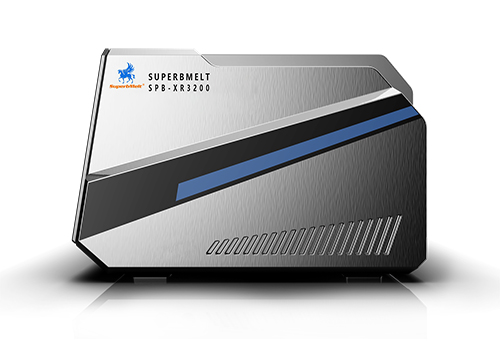
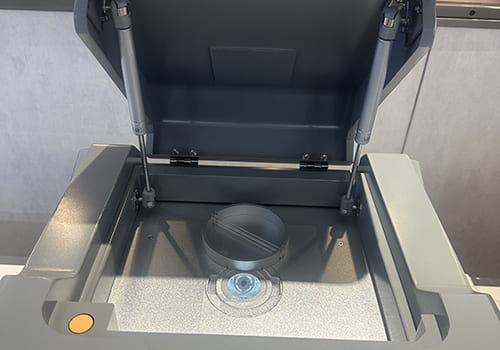
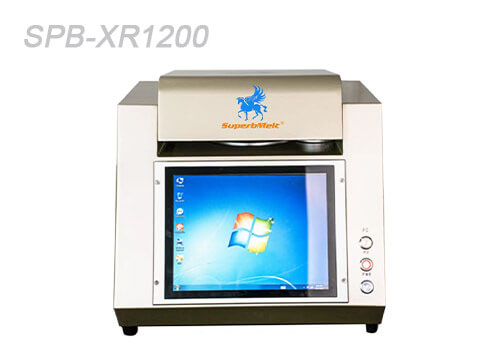
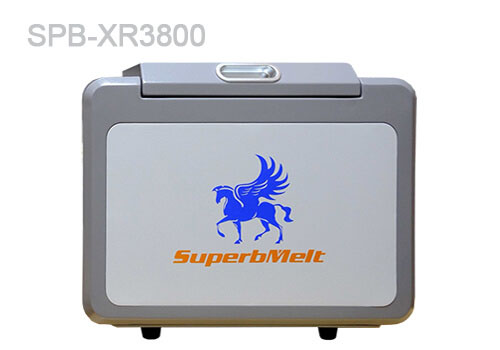
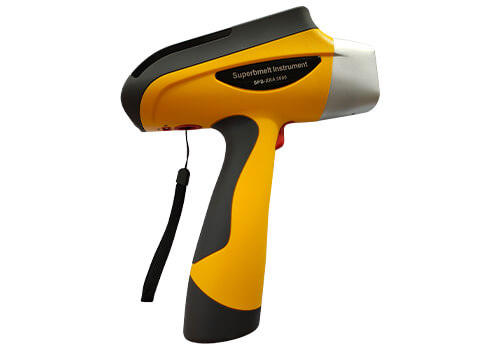
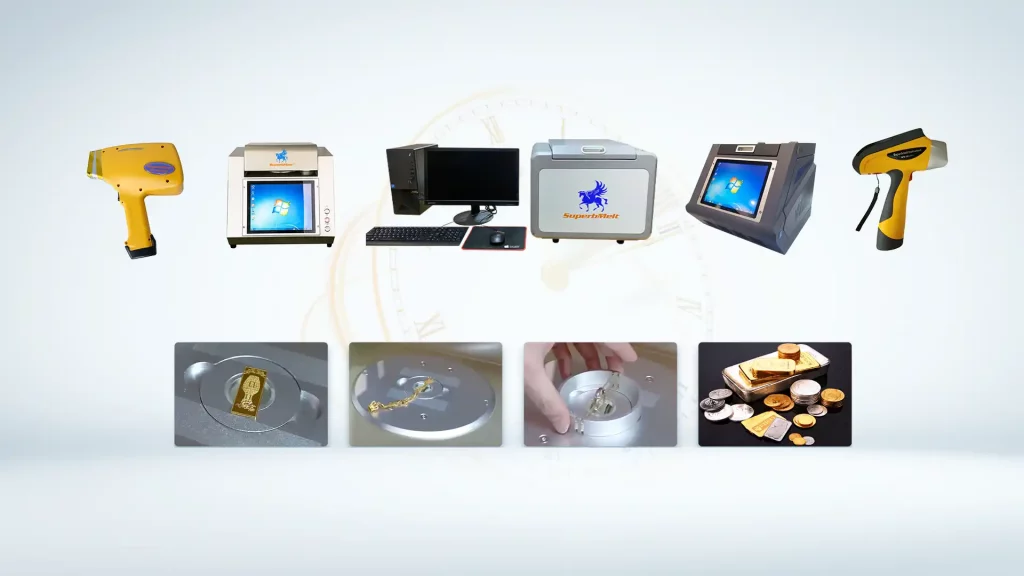
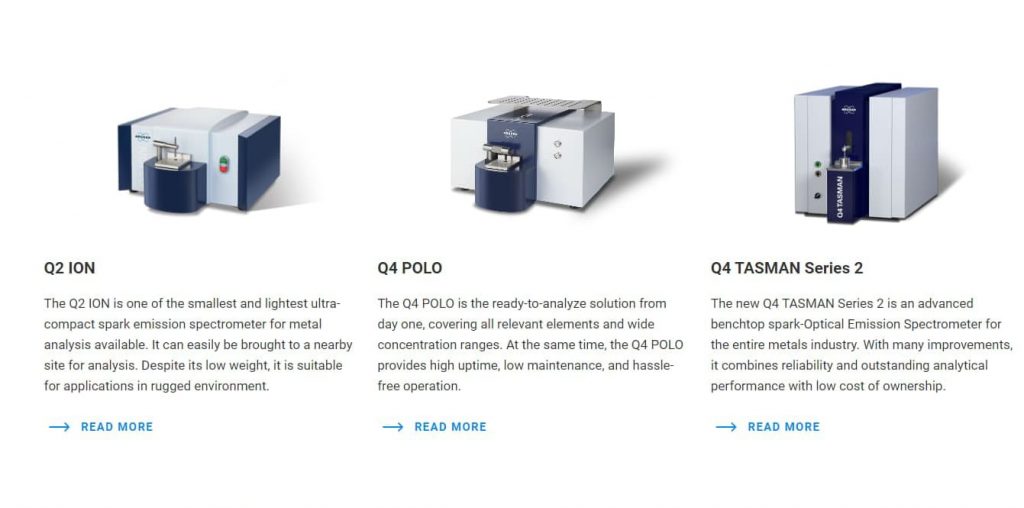

 © Copyright 2008-2021 Superb Electromachinery Co., Limited
© Copyright 2008-2021 Superb Electromachinery Co., Limited